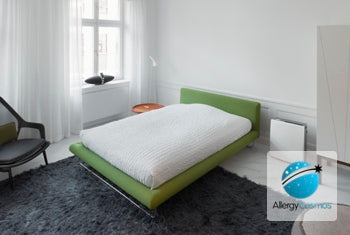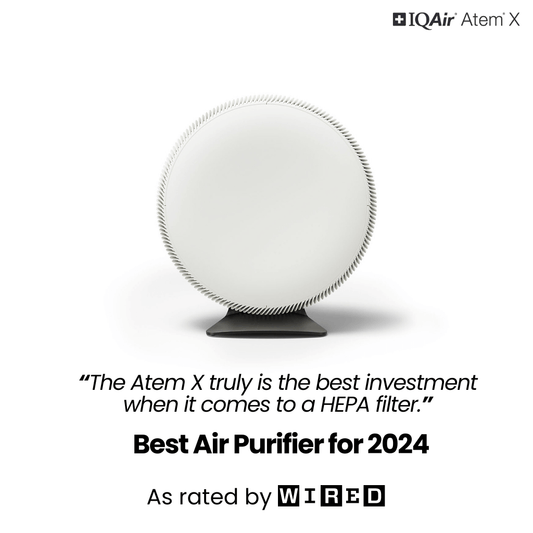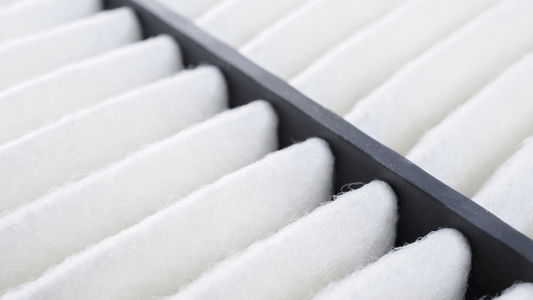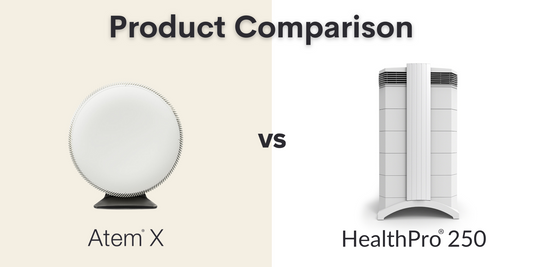For any air purifier to be effective it has to move air. As yet - despite what is often advertised as quiet air purifiers – there is no completely silent way of moving air. Therefore, as part of a good air purifier buying guide, you will want to assess an air purifier’s noise level.
Sound & Sound Characteristics
Sound is the term for the air pressure waves emitted by a vibrating object (such as an air purifier fan) which are picked up by the ear and perceived by the brain through our hearing sense. Noise is merely unwanted sound. Some people's sounds are other people's noise – but there are certain sounds that most people perceive as unpleasant and would call noise. This noise generally includes what is emitted by machines, including, some products such as certain air purifiers.
Sound has various characteristics, which are important to understanding when assessing an air cleaner:
- Frequency is the number of waves emitted per second by the vibrating source. The ear can readily distinguish between high frequency (high-pitched) sounds and low frequency (low-pitched) sounds.
- Volume is the size (height) of the waves emitted by the source. High volume sounds are loud, low volume sounds are soft.
- Sound pressure is the actual change in air pressure caused by the vibrating source.
- Sound is a type of energy and sound power is the energy emitted per second by the vibrating source.
Measuring dB(A) of an Air Purifier
A quiet air cleaner, like all other sound-emitting objects, has their sound/noise levels measured in decibels [dB], usually multiplied by an 'A' factor which, put simply, accounts for the effect of human hearing on the sound. Thus, when you assess an air purifier's noise levels, look for dB(A) on the product's specifications.
The dB(A) scale is logarithmic. That is, it goes up in powers of ten, rather than in single units. Thus an air purifier marked as 70dB(A) is actually ten times noisier than one marked as 60dB(A) (if the scale were in conventional units, you would expect the 10 times quieter one to be labelled 7dB(A) not 60dB(A)). The reason for using a logarithmic scale is not rooted in devious marketing but is based on mathematics and practicality. Sound pressures, measured in Pascals (Pa) cover a very wide scale, from 0.00002Pa to 20Pa (ie from the lower threshold of human hearing to a very loud machine like a pneumatic drill). Sound power, measured in watts (W) similarly, covers a very wide scale, from 0.1µW to 100,000W (ie, from a whisper to a jet engine taking off).
Sound Pressure vs. Sound Power
Both sound pressure and sound power are measured in dB(A) and this is where claims and labels on air purifiers – especially if they are marketed as a quiet air purifier - can become confusing. A normal conversation would be rated as 60dB(A) measured as sound pressure, but as 70dB(A) when measured as sound power. Therefore, some manufacturers (such as Blueair) will tend to use the sound pressure scale (the lower number), rather than the sound power scale (such as IQAir), which is a higher number for the same noise level. So when comparing quiet air purifiers, it is important to assess if the dB(A) provided by the manufacturer are given in sound power or pressure.
The following table shows where a quiet air purifier comes on the noise scale (measured as sound pressure).
Source of sound Noise level in dB(A):
| Threshold of human hearing: | 0 |
| Rustling leaves: | 10 |
| Very quiet air purifier: | 15 |
| Whispering: | 20 |
| Good air purifier on low: | 32 |
| Typical air purifier on low: | 36 |
| Fridge: | 50 |
| Normal conversation: | 60 |
| Dishwasher: | 55-70 |
| Small orchestra: | 70 |
| Vacuum cleaner: | 80 |
| Lawnmower: | 90 |
Noise levels greater than 50dB can make normal conversation difficult (think of being in a busy hair salon, with all the dryers going) and long-term exposure to levels greater than 70db(A) can damage hearing.
Other Factors to Consider
There are various other factors to take into account when considering the noise emitted by an air purifier:
- A quiet air cleaner will emit more sound at higher speeds (the harder it works, the more noise it makes).
- Where will you locate the air purifier? If it is in the bedroom, then the noise level produced by your air purifier may bother you more when you are trying to get to sleep than if it were downstairs in the lounge.
- The nature of the room the air purifier is placed in will affect noise level, depending on whether it is carpeted, how it is furnished and what kind of walls it has – sound may be either absorbed or reflected back, to differing extents.
- You as a person – some are more sensitive to noise than others and even the same person can experience noise differently at different times, depending on their stress and health levels. Noise can be a source of stress in itself. On the other hand, some people actually like to hear their quiet air purifier working away – it assures them that the air is being cleaned and they enjoy a ‘white noise’ in the background!
Finally, when you assess an air purifier's noise levels note that the air purifier industry does not have any standards for sound emissions. Manufacturers are not obliged to reveal noise levels – even though we would discourage to purchase an air purifier of which the manufacturer does not publish the noise levels. It may be that lack of a label on sound emission means the company has something to hide (or they do not know much about air purifiers) – and you may find the ‘quiet air purifier’ too loud for your requirements.




